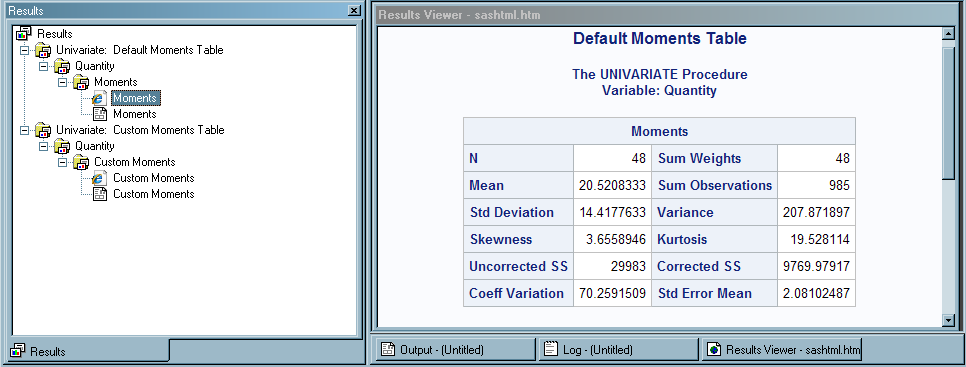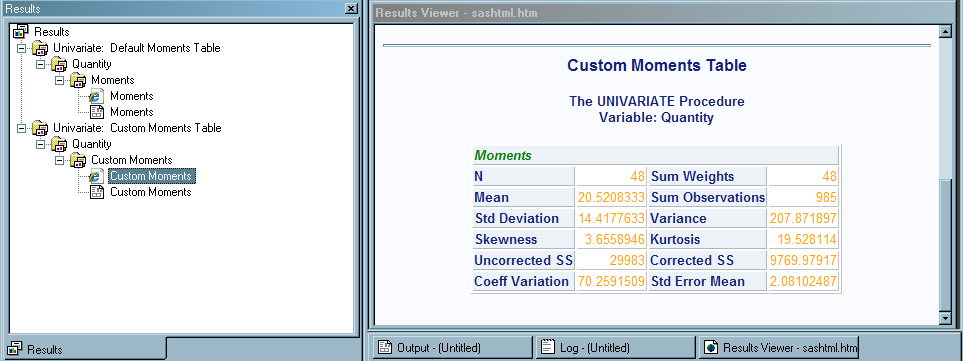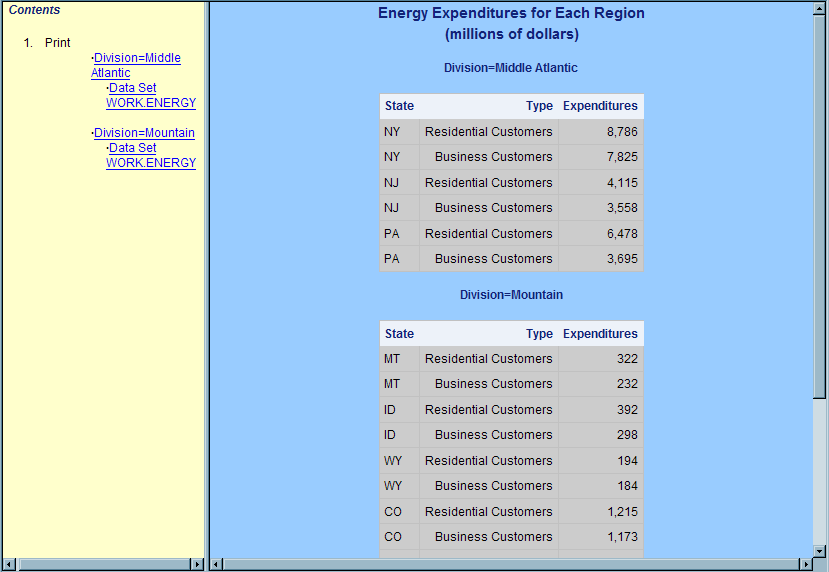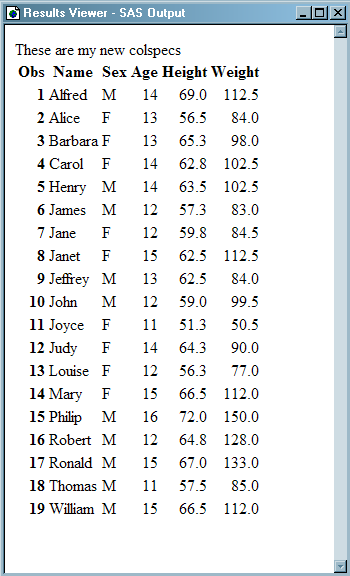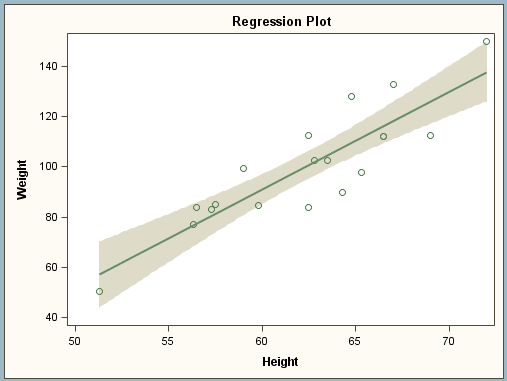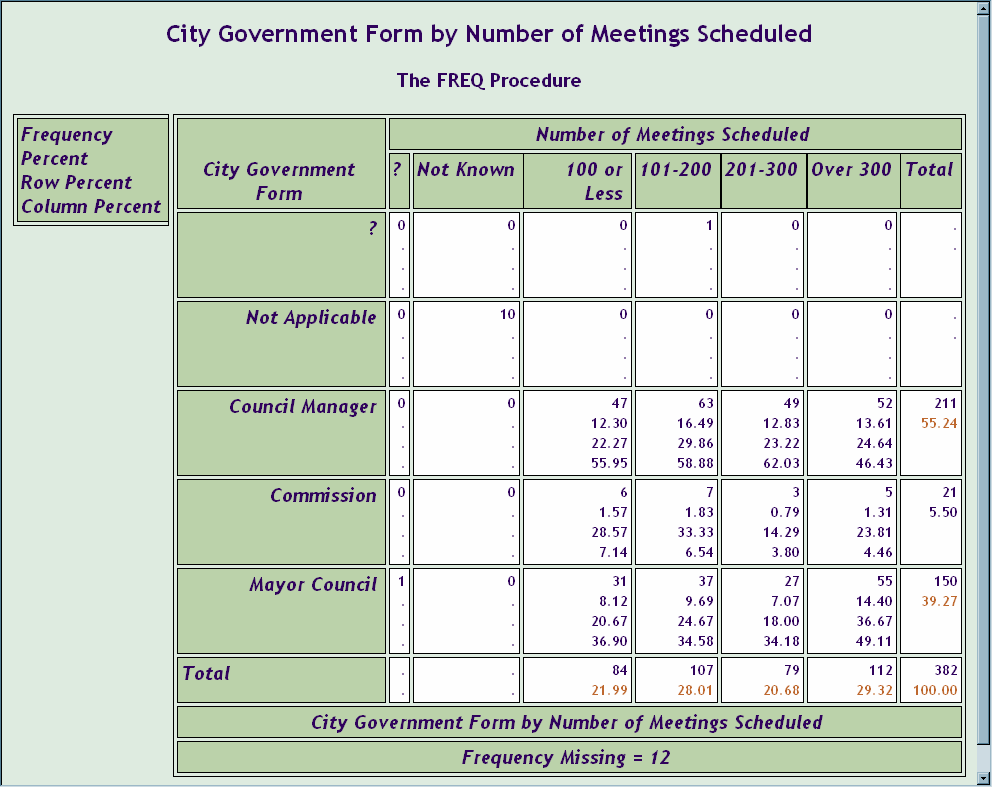TEMPLATE Procedure: Overview
Using the TEMPLATE Procedure
What Can You Do with the TEMPLATE Procedure?
Modify a Table Template That a SAS Procedure Uses
This output shows the use of a customized table template
for the Moments output object from PROC UNIVARIATE. The program used
to create the modified table template does the following:
For the code that creates
the following default and customized output, see Editing a Table Template That a SAS Procedure Uses.
Modify a Style
When you are working with styles, you are more likely
to modify a style that SAS supplies than to write a completely new
style. The following output uses the Styles.HTMLBlue template that
SAS provides, but includes changes made to the style in order to customize
the output's appearance. For the code that creates this output, see Using the CLASS Statement.
Create Your Own Tagset
Create a Template-Based Graph
STATGRAPH templates
are used to create output called ODS Graphics. For complete information,
see the SAS Graph Template Language: User's Guide.
The following code creates
the STATGRAPH template MyGraphs.Regplot, which creates the following
graph.
proc template;
define statgraph mygraphs.regplot;
begingraph;
entrytitle "Regression Plot";
layout overlay;
modelband "mean";
scatterplot x=height y=weight;
regressionplot x=height y=weight / clm="mean";
endlayout;
endgraph;
end;
run;
ods listing style=analysis;
ods graphics / reset imagename="reg" width=500px;
proc sgrender data=sashelp.class template=mygraphs.regplot;
run;Modify a Crosstabulation Table
The TEMPLATE procedure
enables you to customize the appearance of crosstabulation (contingency)
tables that are created with the FREQ procedure. By default, crosstabulation
tables are formatted according to the CrossTabFreqs template that
SAS provides. However, you can create a customized CrossTabFreqs table
template by using the TEMPLATE procedure with the DEFINE CROSSTABS
statement. For
the SAS code that creates this output, see Creating a Crosstabulation Table Template with a Customized Legend.

